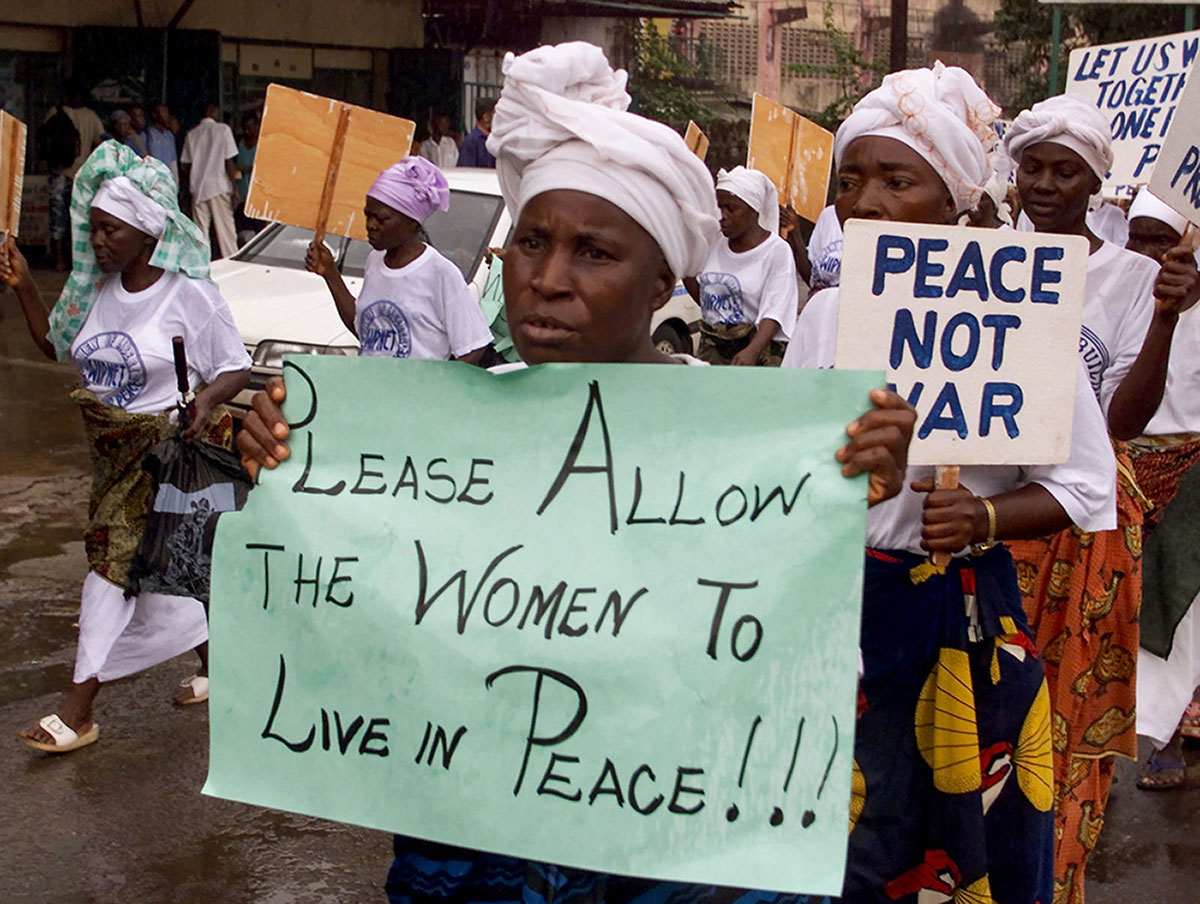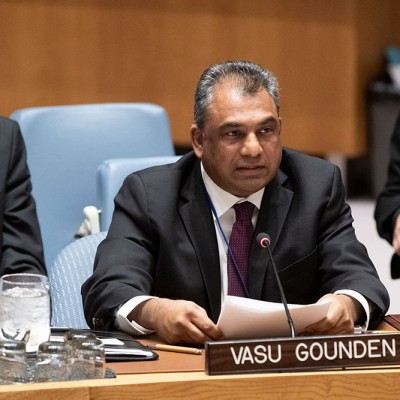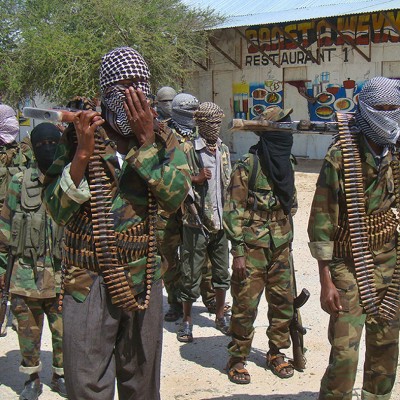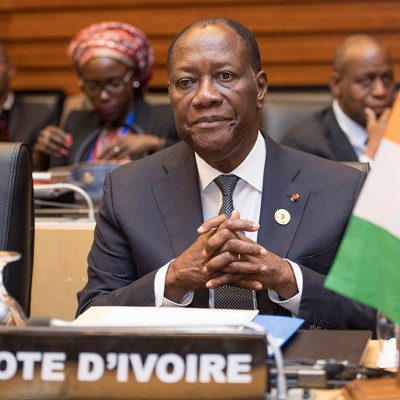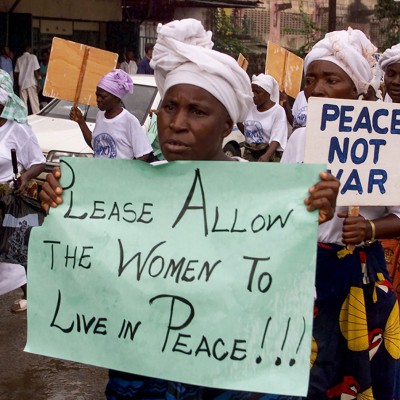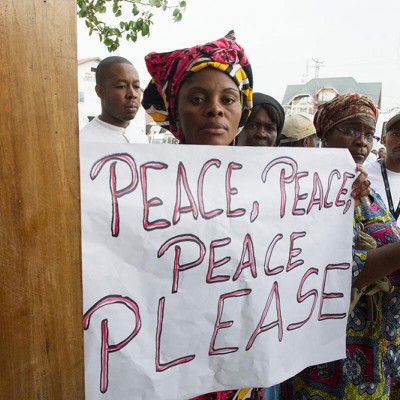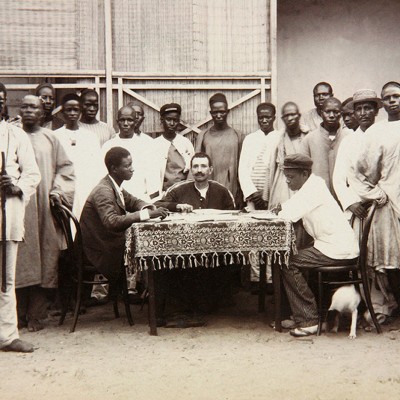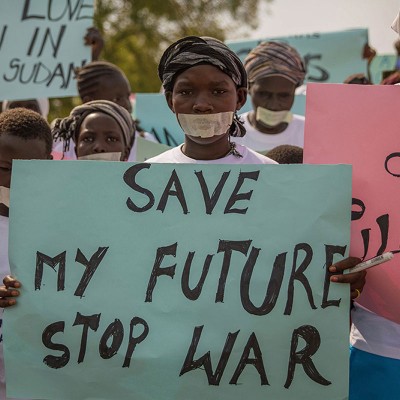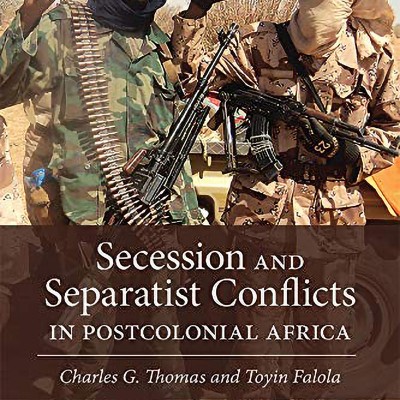Introduction
The year 2020 marked the 20th anniversary of the unanimous adoption of the United Nations (UN) Security Council Resolution 1325 on Women, Peace and Security; 25 years since the World Conference on Women in Beijing; and the conclusion of the African Women’s Decade. Since 2000, the UN has adopted 10 subsequent resolutions and several strategies under the normative framework of the women, peace and security (WPS) agenda. On the African continent, the African Union (AU) and its member states have promoted the WPS agenda through several legal guidelines, training manuals and normative frameworks, including Aspiration 6 of Agenda 2063, the Solemn Declaration on Gender Equality in Africa (2004), The Protocol to the African Charter on Human and Peoples’ Rights on the Rights of Women in Africa (2003) and the AU Gender Policy (2009). Furthermore, in 2016, more than 19 AU member states adopted Resolution 1325 national action plans and, in 2018, the AU adopted the regional Strategy for Gender Equality and Women’s Empowerment (2018–2028).[2]Still, despite progress in many areas, the advancement of women’s meaningful participation in peacebuilding efforts and the promotion of gender equality in peace and security has been slow.[3]
Since the adoption of Resolution 1325 and the resolutions that followed, which now constitute the WPS normative framework, a substantial body of literature has emerged. The literature has concentrated on some key thematic areas – participation, protection, prevention and gender perspectives – which, to a large degree, mirror the four main pillars in Resolution 1325. In 2018, The Oxford Handbook of Women, Peace and Securityexamined the growing academic and policy contributions to the WPS agenda over the past two decades and highlighted remaining challenges.[4] Therefore, the recent anniversary presents an opportunity to continue on this track and to take stock of recent and ongoing empirical studies and emerging topics within the WPS agenda. This review explores (1) recent academic and policy contributions to the WPS agenda on the African continent from 2017 onwards, with a special emphasis on participation; and (2) relevant new contributions regarding emerging challenges to female participation in peacebuilding efforts.
There have been several reviews regarding the operationalisation and implementation of the goals set out in Resolution 1325 by both the UN and the AU, and in academic communities – for example, the AU Commission Review; Implementation of the Women, Peace, and Security Agenda in Africa; the Continental Results Framework: Monitoring and Reporting on the Implementation of the Women, Peace and Security Agenda in Africa (2018–2028);[5] the review Women, Peace and Security – Implementing the Maputo Protocol in Africa (2016),[6] the recent 10-year Review of the Women, Peace and Security Agenda of the AU Peace and Security Council (2020)[7] and the 2015 UN review, including the UN Global Study.[8] However, the main focus of this article is a review of the academic contributions in the past few years, to evaluate the empirical foundation for the next decade of the WPS agenda.

Recent Studies on Participation
Increased female participation at all levels in peacebuilding efforts has become a well-cited aim in WPS literature since the adoption of Resolution 1325, and much recent academic work focuses on this pillar, which calls for “increased representation of women at all decision-making levels in national, regional and international institutions and mechanisms for the prevention, management, and resolution of conflict”.[9]Hendricks emphasises how the representation of women in the African peace and security architecture has improved, but there are still gaps at the programmatic level in peace support operations and peace negotiations.[10] The number of women deployed also speaks for itself – women constituted only 4.4% of military personnel and 11.15% of police personnel in 2019.[11] The same can be said of female leadership in peace operations. As of 2020, only 10% of force commanders were women.[12]
Increasing female participation is still a challenge, even though there is growing agreement that female participation enhances the chances for lasting peace following a conflict.[13] Both former and recent studies on female participation in peace negotiations and peace operations stress that placing women in key positions is more important than increasing the number of women involved.[14] In recent years, we have seen both quantitative and qualitative research regarding the inclusion of women in peace processes. The Council of Foreign Relations created a dataset generated from empirical studies of peace processes since 1990 and found that parties are more likely to reach an agreement when women’s groups exercise strong influence on the process.[15] Nagel examines how gender relations in specific countries affected the chances of the countries engaging in peace negotiations between 1775 and 2014. He finds that the countries which marginalise women’s participation in public life are less likely to participate in peace negotiations.[16] Another important contribution is the WPS Index, which tracks sustainable peace through inclusivity, justice and security for women every year.[17] On the qualitative side, there are several recent contributions regarding the potential of women’s leadership at the community and grassroots level.[18] An interesting contribution is Kezie-Nwhoa and Were’s study of grassroots activism and informal peacebuilding efforts in South Sudan, which highlights the valuable and often unrecognised work of women’s organisations.[19] Imam, Biu and Yahi further investigate women’s chances of participation in peacebuilding efforts in north-eastern Nigeria and find that even though women are often seen as victims, they still engage in informal peacebuilding efforts and, through these efforts, they become activists in their own right.[20] Finally, Conolly explores the situation in The Gambia, and emphasises how three areas have prevented the escalation of conflict: women’s empowerment; youth empowerment and entrepreneurship; and transitional justice and governance.[21]

The notion of increasing female participation in peace operations has often been linked to the argument of how increasing the number of women improves the overall operational effectiveness of the mission.[22] This focus is still central in recent contributions that emphasise the role of women in community outreach, better protection of civilians, and how the inclusion of women in peace operations creates a better understanding of conflict drivers.[23] These arguments were reinforced by recent survey data from the Norwegian Institute of International Affairs, where a clear majority of the respondents affirmed that women contribute positively to “better outreach to the local community; increased legitimacy as perceived by the local population; better intelligence gathering; higher reporting of sexual violence; and better situational understanding”.[24]
Related to the argument of operational effectiveness is the argument that female participation decreases incidents of sexual exploitation and abuse (SEA) by peacekeepers within peace operations.[25] One of the methods highlighted as preventive for SEA is the comprehensive training of peacekeeping personnel, and a recent study by Caparini examines to what extent gender was integrated in the content of four different approaches to gender training for police forces between 2014 and 2016. The study demonstrates how the different courses varied considerably in method. The study concludes that while a standardised curriculum serves a purpose, it produces only a minimum requirement in training. Troop- and police-contributing countries (T/PCCs) should draw on teaching methodologies and innovative approaches in their training of police and other forces to improve the understanding of gender in peace operations.[26]
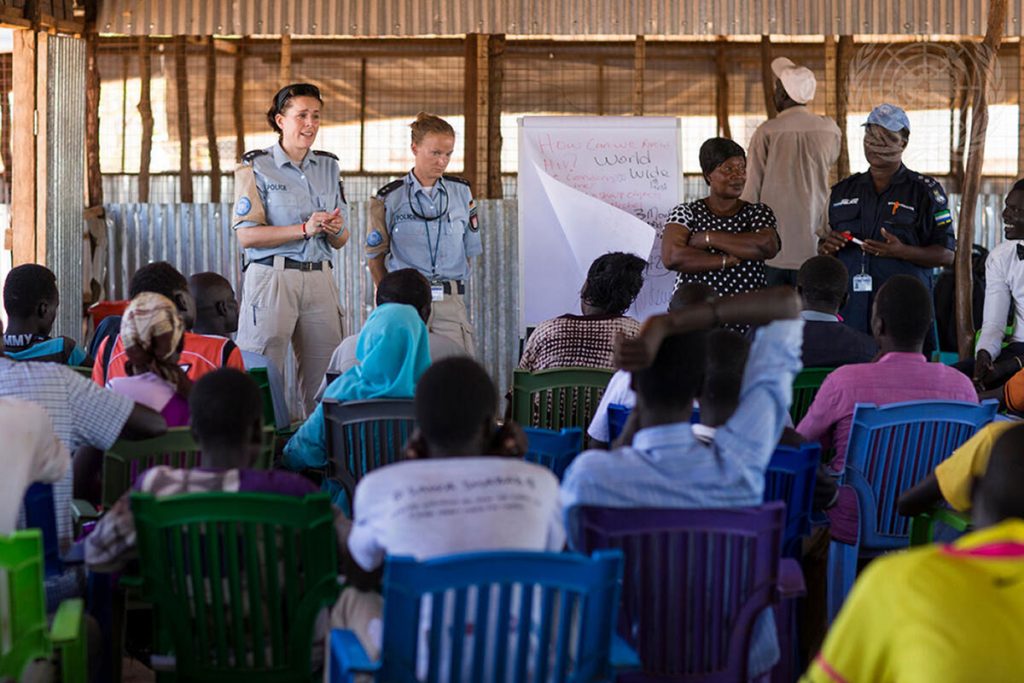
Meeting numbers and targets is only one part of the meaningful integration of women – it also requires a better understanding of the barriers and expectations of women in peacebuilding efforts.[27] A central ongoing study of the participation of women in peace operations is the Elsie Initiative, launched by Canada in 2017. Its goal is to help overcome barriers to female participation and increase the number of uniformed women in UN peace operations. The initiative published its baseline study in 2018, and is currently conducting research in different countries with a common barrier assessment methodology. The study identified the following 10 barriers to female participation: eligible pool, deployment selection, deployment criteria, household constraints, top-down leadership, inadequate accommodation and equipment, negative experiences, disincentives to redeploy, stereotypical gender roles, and social exclusion.[28] The barriers identified were based on existing literature, and also correspond with a recent survey on the assumptions and barriers to female participation in peace operations, which found that the three main barriers included: lack of gender equality in the country they come from; stereotypical gender roles; and eligible pool – that is, the low number of women available for combat roles.[29] A recent 2020 report by Vermeij looks into taboos and stigmas as key barriers to women’s deployment in peace operations, and finds that women are often perceived as weaker than men and in need of protection. In addition, almost all the women interviewed felt they constantly needed to prove themselves.[30]One key trend that can be drawn from the existing literature is that many of the barriers to female participation seem related to the policies and national recruitment strategies of T/PCCs. A recent interesting contribution in this regard is the Foreign Policy Analysis’s 2020 Special Issue on Gender and Foreign Policy analysis. One of the articles by Haastrup investigates gender norms in South African foreign policy, and finds that the domestic context is crucial in shaping the feminist aspects of a country’s foreign policy.[31]
Recently, there has been increased scholarly focus on context awareness and context-specific data in different peace operations. The Elsie Initiative aims to support T/PCCs in identifying the specific barriers in their specific contexts, and there are similar tendencies in other studies concerning the participation of women in peace operations. Empirical studies from the Effectiveness of Peace Operations Network (EPON) emphasise the importance of context awareness and context sensitivity.[32] For example, a well-known assumption in the literature is that women often have better outreach to local communities. The EPON study of the AU Mission in Somalia (AMISOM) demonstrates how the “added” value of female peacekeepers was difficult to measure, due to high security risks linked to physical engagement. In AMISOM, the “bunkerisation” of mission staff created a distance between the mission and local communities, which often made engagement impossible.[33]This example underlines how context-specific challenges may influence the impact of both female and male peacekeepers.

Critique and Changing Discourse?
Many current studies are moving away from essentialist arguments and assumptions on the “added value” of female participation in peace negotiations and peace operations. Essentialist arguments often portray gender stereotypes, such as that women are more peaceful and compassionate than men, which may contribute to women being placed in specific roles within missions, such as gender advisers or focal points for victims of sexual violence.[34] An example is the rhetoric concerning female participation and the decrease of SEA in peace operations. Hernandez points to the problem of viewing women as a “quick fix” to sexual abuse in peacekeeping.[35] However, the discourse on the “added value” of women in peace efforts is also being criticised for other reasons. Several studies underline how there is a lack of evidence on the connection between female participation and increased operational effectiveness and sustainable peace.[36] This is a relevant strand of literature that questions the established assumptions regarding the effects of female participation and the methods and data produced. These researchers argue that the many assumptions of women’s added value for peace operations confuse the debate between normative and empirical argumentation, and the arguments on women’s added value end up being counterproductive for gender equality.[37] Wilèn emphasises how the discourse on the added value of women in peace operations creates a higher burden of proof on female peacekeepers – they need to prove their added value, while men do not have the same expectations.[38] An ongoing research project funded by the Elsie Initiative is Uniformed Women in Peace Operations: Challenging Assumptions and Transforming Approaches, which explores female participation in the UN Police, and also emphasises the need for more in-depth nuanced research that does not essentialise gender.[39]
The debate between those who justify women’s participation with arguments on operational effectiveness and those who question these common assumptions is also visible between practitioners and within institutions such as the UN Security Council. In the Council’s latest resolution on women and peacekeeping, Resolution 2538 adopted in August 2020, there was a change in wording regarding the added value of female peacekeepers.[40] Dustin highlights how some elected members noted the stereotypical language regarding “female peacekeepers’ indispensable role” when discussing protection and the prevention of SEA in peace operations. This led to a change in language in Resolution 2538. While it still focused on operational effectiveness, it avoided direct links between female peacekeepers and the level of SEA in peace operations, while protection was linked to the balance of women and men in the operations, not the mere presence of women.[41]
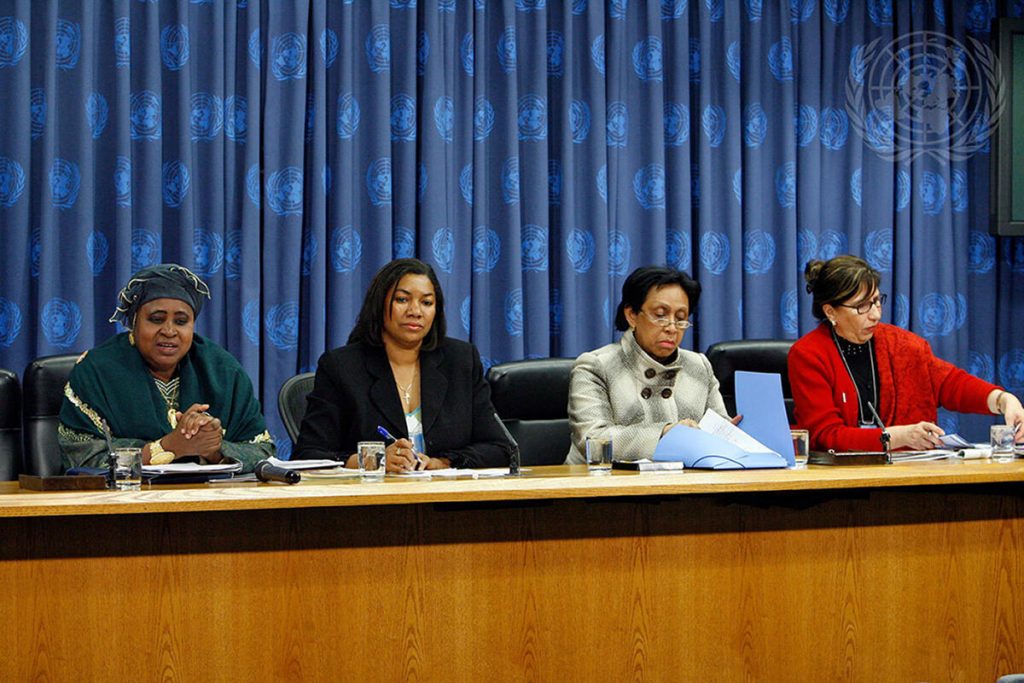
Two Emerging Challenges to Female Participation
Climate Change
Two years ago, the Oxford handbook included cross-cutting topics such as climate change in its review of the WPS agenda.[42] The academic literature will always follow the changing context and nature of conflict, and in several parts of the world, women and girls’ livelihoods are especially affected by the direct and indirect consequences of climate change. The African continent is disproportionally affected by climate change, as 20 African countries are warming at the fastest pace in the world.[43] The WPS agenda has started to recognise climate change as a security issue, even though the academic responses are still limited and lack empirical focus. However, some recent scholarly contributions emphasise how women should be agents of change in addressing these issues, and how their participation is key.[44] Smith examines the WPS action plans of UN member states and emphasises the need for concrete goals and meaningful participation by affected groups in policies and governance. This is echoed in the 2020 report by De Coning and Krampe regarding the effects of climate change on security and development in the Sahel and the Lake Chad Basin. The report emphasises how regional strategies should ensure the active participation of diverse groups of women in decision-making, policies and programmes focusing on climate change and related security and development risks. Fostering relationships between youth and women’s organisations may also create common platforms and build capacities for young women peacebuilders.[45]

COVID-19 Pandemic
The most recent contributions included in the WPS literature concern the consequences of COVID-19. The year 2020 was supposed to take stock of the achievements made since the adoption of Resolution 1325 and address the remaining challenges ahead. Instead, most of the year’s events were cancelled or postponed as policymakers struggled to cope with the repercussions of COVID-19. Efforts to enhance gender equality and to incorporate gender expertise in peacebuilding initiatives already face a range of challenges, especially in times of budget cuts, contentious political climates and pushback on the WPS agenda.[46] Taylor and Baldwin emphasise how commitments to gender equality are under threat, and that a growing number of states are questioning the standards of women’s rights. This makes the WPS agenda especially vulnerable in the face of the COVID-19 outbreak, because as Tryggestad highlights, a lack of resources often impacts women more than men.[47] Experience from the outbreak of the Ebola virus in Liberia showed that the prevention measures heavily impacted women’s livelihoods, especially due to travel restrictions and their work at local markets. As the COVID-19 measures constrain both the work of the AU and peacebuilding efforts across the continent, it is especially important that gender mainstreaming and gender-related work are not being sidelined.[48]
Conclusion
As we move towards the next decade of the WPS, this review has taken stock of some recent empirical studies of the WPS agenda on the African continent, with an emphasis on the participation pillar of Resolution 1325. Currently, there are several interesting studies of female participation in national and local peace processes, as well as ambitious projects on how to decrease barriers to female participation that are being conducted. The arguments concerning the link between female participation and operational effectiveness are still valid and important, but at the same time, some of these assumptions are being challenged by scholars emphasising the problematic nature of measuring this link and how it may increase the burden on female peacekeepers to prove their added value in peace operations.
In 2018, the Oxford handbook of WPS concluded that more evidence-based research on women’s effect on peacebuilding efforts was needed.[49] This is still a highly relevant observation, including in other areas of the WPS agenda. As the African continent faces emerging challenges such as climate change and the repercussions of COVID-19, which affect women and their participation in peace efforts significantly, these emerging issues need to be better incorporated into the WPS agenda through measurable and valid data.
Jenny Nortvedt is a Junior Research Fellow in the Peace, Conflict and Development Group at the Norwegian Institute of International Affairs (NUPI).
[1] Thanks to Eli Stamnes and Maria Gilen Røysamb for useful comments on an earlier version of this article.
[2] Abdulmelik, Semiha (2016) Implementation of the Women Peace and Security Agenda in Africa. In Diop, Bineta, Butera, Jean-Bosco and Shaanika, Theophilia (eds) The Office of the Special Envoy of the African Union Commission Chairperson on Women, Peace and Security. Addis Ababa: African Union.
[3] Smit, Timo and Tidblad-Lundholm, Kajsa (2018) ‘Trends in Women’s Participation in UN, EU and OSCE Peace Operations’, Available at: <https://www.sipri.org/publications/2018/sipri-policy-papers/trends-womens-participation-un-eu-and-osce-peace-operations>[Accessed 16 September 2020].
[4] Davies, Sara E. and True, Jacqui (eds) (2018) The Oxford Handbook of Women, Peace and Security. Oxford: Oxford University Press.
[5] AUC (2019) ‘Continental Results Framework: Monitoring and Reporting on the Implementation of the Women, Peace and Security Agenda in Africa (2018–2028)’, Available at: <https://au.int/en/documents/20190204/continental-results-framework-reporting-and-monitoring-implementation-women-peace> [Accessed 10 October 2020].
[6] Sigsworth, Romi and Kumalo, Liezelle (2016) ‘Women, Peace and Security – Implementing the Maputo Protocol in Africa’, Available at: <https://reliefweb.int/sites/reliefweb.int/files/resources/Paper295.pdf> [Accessed 10 October 2020].
[7] Amani Africa (2020) ‘10 Years Review of the Women, Peace and Security Agenda of the AU Peace and Security Council’, Available at: <http://www.amaniafrica-et.org/images/Reports/SpecialreportNo8.pdf> [Accessed 10 October 2020].
[8] Coomaraswamy, Radhika (2015) Preventing Conflict, Transforming Justice, Securing the Peace – A Global Study on the Implementation of United Nations Security Council Resolution 1325’, UN Women, Available at: <https://wps.unwomen.org/about/> [Accessed 10 October 2020].
[9] UN (2000) ‘UN Document S/RES/1325 (2000)’, Available at: <https://www.un.org/womenwatch/osagi/wps/#resolution> [Accessed 1 September 2020].
[10] Hendricks, Cheryl (2017) Progress and Challenges in Implementing the Women, Peace and Security Agenda in the African Union’s Peace and Security Architecture. Africa Development/Afrique Et Développement, 42 (3), pp. 73–98.
[11] UN Peacekeeping (2020) ‘Civilians’, Available at: <https://peacekeeping.un.org/en/civilians> [Accessed 9 September 2020].
[12] Van der Lijn, Jair and Smit, Timo (2020) ‘Women in Multilateral Peace Operations in 2020: What’s the State of Play?’, Available at: <https://www.sipri.org/publications/2020/other-publications/women-multilateral-peace-operations-2020-whats-state-play> [Accessed 9 September 2020].
[13] See Krause, Jana, Krause, Werner and Bränfors, Piia (2018) Women’s Participation in Peace Negotiations and the Durability of Peace. International Interactions, 44 (6), pp. 985–1016; Dayal, Anjali and Christien, Agathe (2020) ‘Reframing Women’s Roles in Peace Processes: Beyond the Negotiating Table’, Available at: <https://giwps.georgetown.edu/resource/reframing-womens-roles-in-peace-processes/> [Accessed 9 September 2020]; and Council on Foreign Relations (2019) ‘Women’s Participation in Peace Processes’, Available at: <www.cfr.org/interactive/interactive/womens-participation-in-peace-processes> [Accessed 10 October 2020].
[14] Paffenholz, Tania, Ross, Nick, Dixon, Steven, Schluchter, Anna-Lena and True, Jacqui (2015) ‘Making Women Count – Not Just Counting Women’, UN Women, Available at: <https://www.unwomen.org/en/digital-library/publications/2017/5/making-women-count-not-just-counting-women> [Accessed 10 October 2020]; Paffenholz, Tania (2018) Women in Peace Negotiations. In Aggestam, Karin and Towns, Ann E. Towns (eds) Gendering Diplomacy and International Negotiation. Cham: Palgrave Macmillan, pp. 169–191; Baldwin, Gretchen and Taylor, Sarah (2020) ‘Uniformed Women in Peace Operations: Challenging Assumptions and Transforming Approaches’, IPI, Available at: <https://www.ipinst.org/2020/06/uniformed-women-in-peace-operations> [Accessed 10 October 2020];and Mahmoud, Youssef (2018a) ‘Without Prioritization of Peace and Women’s Leadership, WPS in Peril’, Global Observatory, IPI, Available at: <https://theglobalobservatory.org/2018/10/without-prioritization-peace-womens-leadership-wps-in-peril/> [Accessed 15 October 2020].
[15] Bigio, Jamille and Vogelstein, Rachel B. (2018) ‘Increasing Female Participation in Peacekeeping Operations’, CFR, Available at: <https://www.cfr.org/report/increasing-female-participation-peacekeeping-operations> [Accessed 15 October 2020].
[16] Nagel, Robert Ulrich (2020) Gendered Preferences: How Women’s Inclusion in Society Shapes Negotiation Occurrence in Intrastate Conflicts. Journal of Peace Research.
[17] Klugman, Jeni, Gaye, Amie, Dahl, Marianne, Dale, Kelly and Ortiz, Elena (2019) ‘Women, Peace, and Security Index 2019/20: Tracking Sustainable Peace through Inclusion, Justice, and Security for Women’, Available at: <https://www.prio.org/utility/DownloadFile.ashx?id=1898&type=publicationfile> [Accessed 5 October 2020].
[18] Mahmoud, Youssef (2018b) ‘Can FemWise-Africa Make Mediation Work for Sustaining Peace?’, Global Observatory, IPI, Available at: <https://theglobalobservatory.org/2018/06/can-femwise-make-mediation-work-sustaining-peace/> [Accessed 16 October 2020].
[19] Kezie-Nwhoa, Helen and Were, Juliet (2018) ‘Women’s Informal Peace Efforts: Grassroots Activism in South Sudan’, CMI, Available at: <https://www.cmi.no/publications/6700-womens-informal-peace-efforts> [Accessed 15 October 2020].
[20] Imam, Ayesha, Biu, Hauwa and Yahi, Maina (2020) ‘Women’s Informal Peacebuilding in North East Nigeria’, CMI, Available at: <https://www.cmi.no/publications/7296-womens-informal-peacebuilding-in-north-east-nigeria> [Accessed 15 October 2020].
[21] Conolly, Lesley (2018) Sustaining Peace in the ‘New Gambia’. Conflict Trends, 2018/1.
[22] Olsson, Louise and Tryggestad, Torunn (eds) (2001) Women and International Peacekeeping. London & Portland: Frank Cass Publishers.
[23] Sharland, Lisa (2019) ‘Women, Gender and the A4P Agenda: An Opportunity for Action?’, International Forum for the Challenges of Peace Operations, Available at: <https://www.challengesforum.org/paper/policy-brief-20197-women-gender-and-the-a4p-agenda-an-opportunity-for-action/> [Accessed 15 October 2020]; Ghittoni, Marta, Lehouck, Léa and Watson, Callum (2018) Elsie Initiative for Women in Peace Operations: Baseline Study. Geneva Centre for Security Sector Governance; and Krause, Jana, Krause, Werner and Bränfors, Piia (2018) op. cit.
[24] See Osland, Kari M., Røysamb, Maria and Nortvedt, Jenny (2020a) Female Peacekeepers and Operational Effectiveness in UN Peace Operations. Research paper. Oslo: NUPI. The survey was conducted in March 2020, and the 80 participating respondents were people who had worked in peace operations, both military, police and civilians, and experts on the topic. 31% of respondents were Norwegian, the rest were from various other countries.
[25] UN (2019) ‘Remarks to the Security Council on Women in Peacekeeping’, Available at: <https://www.un.org/sg/en/content/sg/speeches/2019-04-11/remarks-security-council-women-peacekeeping> [Accessed 24 October 2020].
[26] See Caparini, Marina (2020) Gender Training for Police Peacekeepers: Where are we at? In Scheuermann, Manuela and Zürn, Anja (eds) Gender Roles in Peace and Security: Prevent, Protect, Participate. Switzerland: Springer International Publishing; andCaparini, Marina (2019) Gender Training for Police Peacekeepers: Approaching Two Decades of United Nations Security Council Resolution 1325. Topical backgrounder. Stockholm: SIPRI.
[27] Baldwin, Gretchen and Taylor, Sarah (2020) op. cit.
[28] Ghittoni, Marta et al. (2018) op. cit.
[29] Osland, Kari M., Røysamb, Maria and Nortvedt, Jenny (2020b) Unity in Goals, Diversity in Means – and the Discourse on Female Peacekeepers in UN Peace Operations. Working Paper 893. Oslo: NUPI.
[30] Vermeij, Lotte (2020) ‘Women First, Soldier Second: Taboos and Stigmas Facing Military Women in UN Peace Operations’, International Peace Institute, Available from: <https://www.ipinst.org/wp-content/uploads/2020/10/2010_Taboos-and-Stigmas-Facing-Military-Women-in-UN-Peace-Operations.pdf> [Accessed 25 October 2020].
[31] Haastrup, Toni (2020) Gendering South Africa’s Foreign Policy: Toward a Feminist Approach? Foreign Policy Analysis, 16 (2), pp. 199–216.
[32] EPON (2020) ‘Effectiveness of Peace Operations Network’, Available at: <https://effectivepeaceops.net> [Accessed 10 October 2020]; and Osland, Kari M. et al. (2020a) op. cit.
[33] Williams, Paul D., D’Alessandro, Michele, Darkwa, Linda, De Coning, Cedric, Helal, Amina, Machakaire, James and Rupesinghe, Natasja (2018) Assessing the Effectiveness of the African Union Mission in Somalia (AMISOM). Report 1/2018. Oslo: Norwegian Institute of International Affairs.
[34] Rupesinghe, Natasja, Stamnes, Eli and Karlsrud, John (2019) WPS and Female Peacekeepers. In Davies, Sara E. and True, Jacqui (eds) op. cit.
[35] Hernandez, Brianna N. (2020) ‘Sexual Abuse in UN Peacekeeping: The Problem of Viewing Women as a “Quick Fix”’, E-International Relations, Available at: <https://www.e-ir.info/2020/02/20/sexual-abuse-in-un-peacekeeping-the-problem-of-viewing-women-as-a-quick-fix/> [Accessed 10 October 2020].
[36] For more information, see: Wilén, Nina (2020) ‘The Added Value of Male Peacekeepers’, Available at: <https://www.egmontinstitute.be/whats-the-added-value-of-male-peacekeepers/> [Accessed 10 October 2020]; Zuercher, Cristoph (2018) ‘Tangible Evidence or Wishful Thinking’, Available at: <https://www.cips-cepi.ca/2018/08/20/tangible-evidence-or-wishful-thinking/> [Accessed 10 October 2020]; Fröhlich, Marieke (2019) Masculinities in Peacekeeping: Limits and Transformations of UNSCR 1325 in the South African National Defence Force. PRIF Report 7/2019; Rupesinghe, Natasja et al. (2019) op. cit.; and Nagel, Robert U. (2019) ‘The Known Knowns and Known Unknowns in Data on Women, Peace and Security’, Available at: <www.lse.ac.uk/women-peace-security/assets/documents/2019/WPS19Nagel.pdf> [Accessed 10 September 2020].
[37] Ghittoni, Marta et al. (2018) op. cit.
[38] Wilen, Nina (2020) op. cit.
[39] Baldwin, Gretchen and Taylor, Sarah (2020) op. cit.
[40] What’s in Blue (2020) ‘Women in Peacekeeping Operations: Adoption of a Resolution’, Available at: <https://www.whatsinblue.org/2020/08/women-in-peacekeeping-operations-adoption-of-a-resolution.php> [Accessed 25 October 2020].
[41] Dustin, Justin (2020) ‘Signs of Change at the United Nations’, Available at: <https://www.blogalstudies.com/post/women-in-peacekeeping-signs-of-change-at-theunited-nations> [Accessed 10 October 2020].
[42] Davies, Sara E. and True, Jacqui (2018) op. cit.
[43] De Coning, Cedric H. and Krampe, Florian (2020) Multilateral Cooperation in the Area of Climate Related Security and Development Risks in Africa. NUPI Report 4/2020. Oslo: Norwegian Institute of International Affairs.
[44] Smith, Elizabeth (2020) Climate Change in Women, Peace and Security National Action Plans. SIPRI Insights on Peace and Security. Stockholm: SIPRI; Tanyag, Maria and True, Jacqui (2019) Gender Responsive Alternatives on Climate Change from a Feminist Standpoint. In Kinnvall, Catarina and Rydström, Helle (eds) Climate Hazards, Disasters, and Gender Ramifications. London: Routledge.
[45] ACCORD (2020) ‘Virtual Dialogue: Women and Youth Exchanging Lessons for Peace and Security’, Available at: <https://accord.org.za/publication/women-and-youth-exchanging-lessons-for-peace-and-security/> [Accessed 9 September 2020].
[46] Athie, Aïssata and Taylor, Sarah (2017) ‘UN Peacekeeping: Where is the Gender Expertise?’ Global Observatory IPI, Available at: <https://theglobalobservatory.org/2017/10/un-peacekeeping-where-is-the-gender-expertise/> [Accessed 9 September 2020]; Mahmoud, Youssef (2018a) op. cit.; Osland, Kari M., Røysamb, Maria and Nortvedt, Jenny (2020c) The Impact of COVID-19 on the Women, Peace and Security Agenda. COVID-19 BRIEF, 8/2020. Oslo: Norwegian Institute of International Affairs; Security Council Report (SCR) (2020) ‘Women, Peace and Security: The Agenda at 20’, Available at: <https://www.securitycouncilreport.org/research-reports/women-peace-and-security-the-agenda-at-20.php> [Accessed 9 September 2020]; and Taylor, Sarah and Baldwin, Gretchen (2019) ‘The Global Pushback on Women’s Rights: The State of the Women, Peace, and Security Agenda’, IPI, Available at: <https://www.ipinst.org/wp-content/uploads/2019/09/1909_Global-Pushback.pdf> [Accessed 9 September 2020].
[47] Tryggestad, Torunn (2020) ‘The WPS Agenda and the Coronavirus Pandemic’, PRIO, 1 April, Available at: <https://www.prio.org/News/Item/?x=2534> [Accessed 9 September 2020].
[48] Osland Kari M. et. al. (2020c) op. cit.
[49] Davies, Sara E. and True, Jacqui (2018) op. cit.

